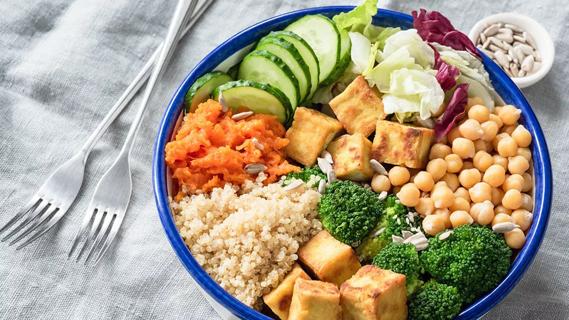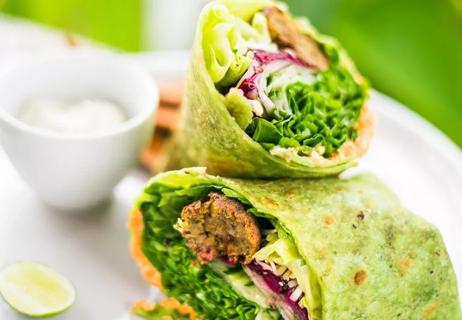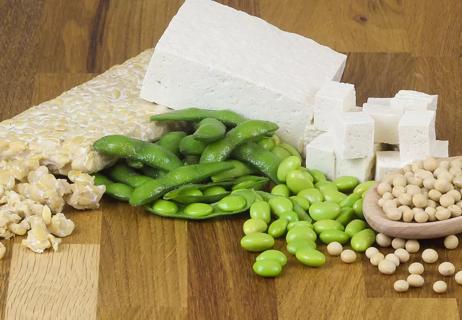What to know about this semi-vegetarian lifestyle

If you’re looking for a healthy diet that doesn’t involve counting calories, super strict rules and allows you to enjoy meat from time to time – look no further than the flexitarian diet.
Advertisement
Cleveland Clinic is a non-profit academic medical center. Advertising on our site helps support our mission. We do not endorse non-Cleveland Clinic products or services. Policy
In its simplest definition, the flexitarian diet is a combination of the words “flexible” and “vegetarian.” It’s a cross between full vegan and vegetarian with the ability to enjoy animal products every so often.
Registered dietitian Kate Patton, MEd, RD, CSSD, LD, explains the ins and outs of this eating style.
The flexitarian diet is listed on U.S. News Best Diet Rankings as the #2 Best Diet Overall (falling just behind the Mediterranean diet). It’s ranked high because it’s a simple, healthy, straight forward way of eating.
The flexitarian diet is essentially a flexible alternative to being a vegetarian. So you’re still focusing on fruits, veggies, whole grains, legumes and nuts, but you occasionally still enjoy meat.
So if vegetarianism never fully appealed to you because you love a good burger, the flexitarian diet might just be for you. (Still, it’s worth noting that this diet does focus on decreasing your overall meat consumption.)
“I think people are attracted to this diet because you can be a little bit more flexible on it,” says Patton. “Most diets imply a start and stop and the weight can creep back on, but the flexitarian diet places a large emphasis on eating a mostly plant-based diet, which is always recommended for long-term weight loss.”
Advertisement
As the name suggests, this diet is flexible, but there are guidelines around how much (and why types) of meat you should be eating. Depending on your commitment level, you could be consuming between 9 and 28 ounces of meat a week while following this eating style. But that’s the beauty of this way of eating – you choose how much you want to cut down.
There are three basic stages of this eating pattern when it comes to decreasing meat:
When someone is first starting out on the flexitarian diet, it’s recommended to forgo meat two days a week. In the beginning stage you should keep your overall meat consumption to no more than 28 ounces a week for the five days you do consume it.
As a reminder, a card-deck sized portion of chicken or steak is about 3 ounces.
As you move through the diet and get used to eating more fruits and vegetables, focus on following a full vegetarian diet three to four days a week. Don’t consume more than 18 ounces of meat during the rest of the week.
Follow a vegetarian diet for five of the seven days in a week. On the two days you do consume meat, do not eat more than 9 total ounces.
Remember, the overall goal of the flexitarian diet is to eat more nutritious plant foods and less meat. When you do incorporate meat into your diet, choose organic, free-range, pasture-raised or grass-fed beef, chicken or turkey. And always choose leaner cuts to minimize extra animal fat.
Since the flexitarian diet isn’t truly vegan or vegetarian, you can decide yourself if you want to incorporate fish. Just be sure to choose wild-caught varieties. “When it comes to protein, your main focus should be on getting the majority of your protein from plants instead of animals,” says Patton.
Dietitians will always recommend a way of eating that focuses on fruits and vegetables. The flexitarian diet does just that. Because of this, there are several benefits to this eating style, including:
Even with all of the benefits of this eating pattern, there are still risks for certain people. Cutting back on meat consumption can lead to some nutrient deficiencies like vitamin B12, zinc and calcium.
Also, some people who suffer from IBS might not do well with a heavily plant-based diet. If you have digestive issues, Patton recommends knowing which fruits and veggies you can tolerate.
“You should always aim to eat the least processed, most natural form of foods,” explains Patton. “You don’t need to worry about counting calories on the flexitarian diet because if you’re eating plant-based foods that comes from the ground, it’s not processed and it’s going to be in its most natural form.”
Advertisement
The flexitarian diet is designed to include a variety of foods, but you should limit animal protein (including seafood) and processed foods and beverages. Here’s what to add to your shopping cart.
Load up on:
Limit:
“Focusing on plant-based foods and not eating as much meat can be really hard for some people,” says Patton. “But nowadays you can find great bean-based burgers, canned bean and lentil soup and bean based pastas to start off, but eventually it’s even better to make your own home made versions. Don’t be afraid to get adventurous with this diet!”
Advertisement
Learn more about our editorial process.
Advertisement

Giving up meat can have a significant effect on lowering cholesterol

A nutrient-packed diet driven by fruits and veggies can lower certain health risks

It’s possible to drop a few pounds as long as you watch what you eat

Turn to these foods for plant protein

Edamame, lentils and chicken breast are good sources of protein

Opt for snacks that have protein, fiber and heathy fats to prevent cravings and keep you feeling full and satisfied

Be mindful of how many eggs you’re eating, how you prepare them and the other sources of saturated fat in your diet

Tips include cutting back on sugar, focusing on exercise and managing stress

The best parenting style balances enforcing rules and showing plenty of love

Tips include cutting back on sugar, focusing on exercise and managing stress

It can be harder to let go when you’ve invested time, energy and emotions — but it might be the healthier choice long term